Not all eCommerce CMS platforms are built for Australia. Some don’t support local payment gateways, others make integration a nightmare, and let’s not even start on clunky customer support.
In 2025, you need a system that’s fast, flexible, and ready to scale. A platform that won’t leave you stuck with high fees or outdated tools.
This guide breaks down the best CMS options for Aussie businesses and highlights what makes them worth your time.
Australian eCommerce Trends: Why Your CMS Choice Matters in 2025
Over the years, we’ve helped many businesses pick the right eCommerce CMS for them, and one thing is clear—trends shape everything. If you’re not adapting, you’re falling behind. Here’s what’s happening in Australia’s eCommerce space and why your CMS needs to keep up:
More Australians are shopping online than ever.
In 2023, 9.5 million Aussie households shopped online—up 1.4% from the previous year. That means more traffic, more transactions, and higher expectations for smooth online experiences.
eCommerce revenue is set to hit US$42.04 billion in 2025.
And it’s not slowing down, with projections reaching US$57.77 billion by 2029. If your CMS can’t scale with this growth, you’re going to feel the strain.
Cart abandonment is a major problem
It’s well known that complicated checkouts and poor UX drive customers away. A CMS that prioritises seamless transactions is a game-changer.
Running an eCommerce store in Australia isn’t getting any easier. Costs are rising, competition is fierce, and the wrong CMS can slow you down. But the right one? It will keep your store agile, your customers happy, and your business growing. Choosing the right platform often involves expert web development to ensure smooth functionality and customisation tailored to your needs.
Related article: 7 Steps to Hire the Right eCommerce Web Designer
What is an eCommerce CMS (Content Management System)?
We’ve talked about the booming eCommerce landscape, but what actually powers an online store? That’s where an eCommerce CMS (Content Management System) comes in.
Think of it as the engine that powers everything under the hood—managing product listings, processing payments, tracking inventory, and handling customer interactions, all without needing advanced coding skills.
It’s like the backbone of a physical store: shelves for products, a checkout for payments, and a system to keep everything organised. The right CMS makes running and scaling an online business smoother, whether you’re just starting out or handling thousands of orders.
Why it Matters for Australian Businesses
Product & Content Management
Easily update product catalogues, track inventory, and keep customers engaged with fresh content.
Local Integrations
Sync with Aussie essentials like Australia Post for shipping and payment gateways that work seamlessly with local banks.
SEO & Marketing Tools
Boost visibility with built-in SEO support tailored for local search engine results. Use marketing automation to streamline campaigns and drive customer engagement.
Top eCommerce CMS Platforms
With so many different CMS platforms available, finding the right one goes beyond ticking feature boxes. The right system will support your growth and adapt to your business needs. We’ve worked with retailers across Australia, and these platforms consistently deliver results. Here’s what they do best (and where they fall short).
WooCommerce – Best for WordPress Users Who Want Full Control
If your site runs on WordPress, WooCommerce is a no-brainer. It’s flexible, powerful, and lets you shape your store exactly how you want. However, when choosing the right eCommerce platform for your business, it’s worth comparing WooCommerce vs Shopify to understand which best fits your needs.
We’ve seen businesses thrive with WooCommerce’s SEO capabilities, but to get the most out of it, consider professional WordPress development to ensure hosting, security, and updates are handled seamlessly.
Where it wins:
Cost-effective, highly customisable, great for SEO.
Where it struggles:
Needs technical know-how, plugin costs add up fast.
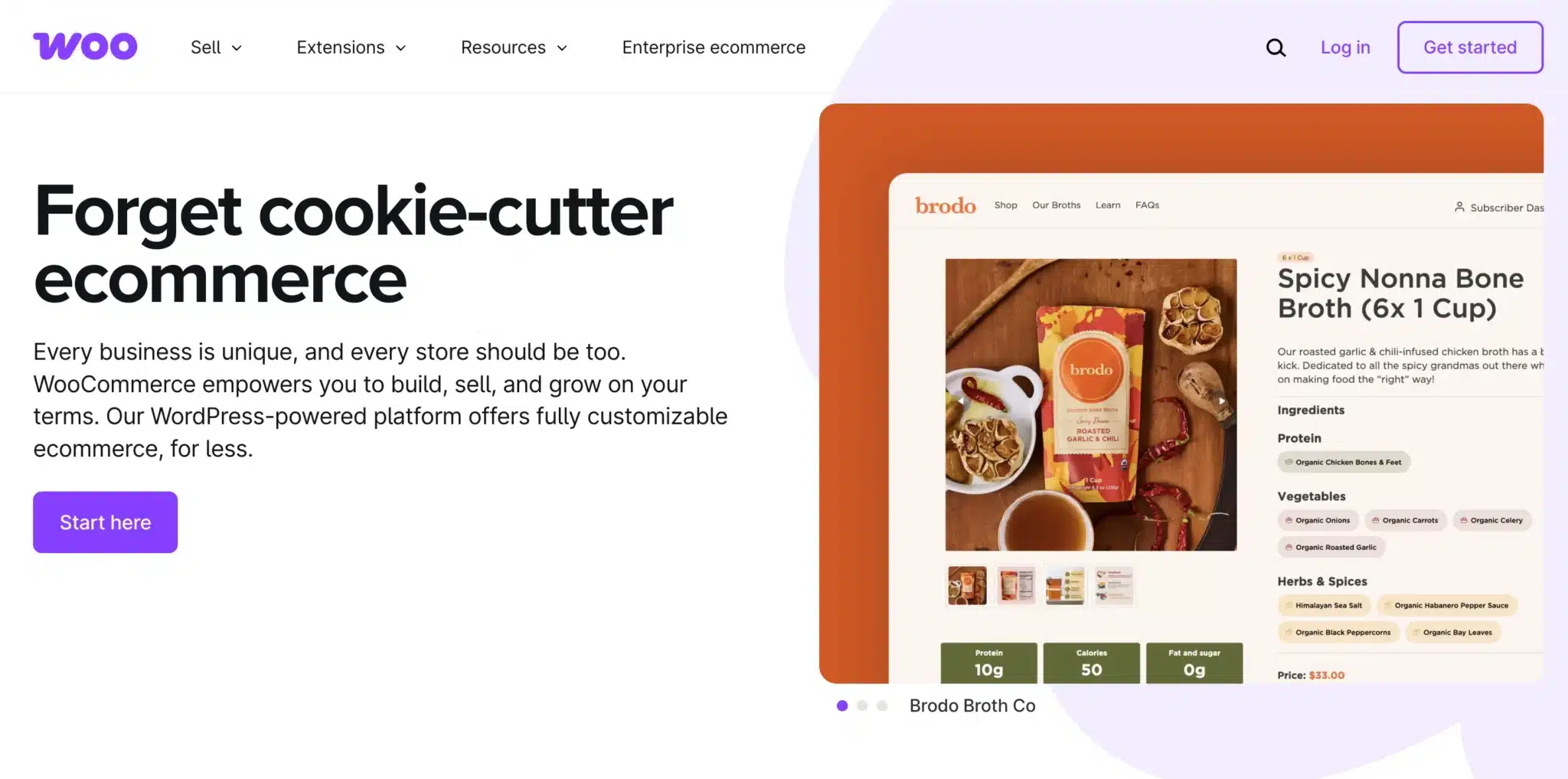
Shopify – Best for Fast, No-Fuss Setup
If you want to launch quickly and avoid technical headaches, Shopify makes it happen. We’ve seen businesses go live in days and scale effortlessly. But if you need deep customisation, you might hit some limits.
Where it wins:
Easy to use, secure, strong app ecosystem.
Where it struggles
Transaction fees (unless using Shopify Payments), limited customisation.

PrestaShop – Best for Budget-Friendly Flexibility
PrestaShop sits between Shopify and WooCommerce—it’s more flexible than Shopify but doesn’t require as much DIY as WooCommerce. Great for growing businesses, especially those selling internationally.
Where it wins:
No monthly fees, multilingual and multi-currency support.
Where it struggles
Requires technical skills, mostly community-driven support.

OpenCart - Best for Businesses That Want a Lightweight, Customisable Store
OpenCart is ideal for businesses that need a simple, lightweight eCommerce solution without extra bloat. It’s open-source, meaning you can tweak it however you like—but that also means you’ll need a developer if you want advanced features.
Where it wins:
Free to use, easy to manage, large extension marketplace.
Where it struggles
Requires coding skills for deep customisation, limited built-in support.
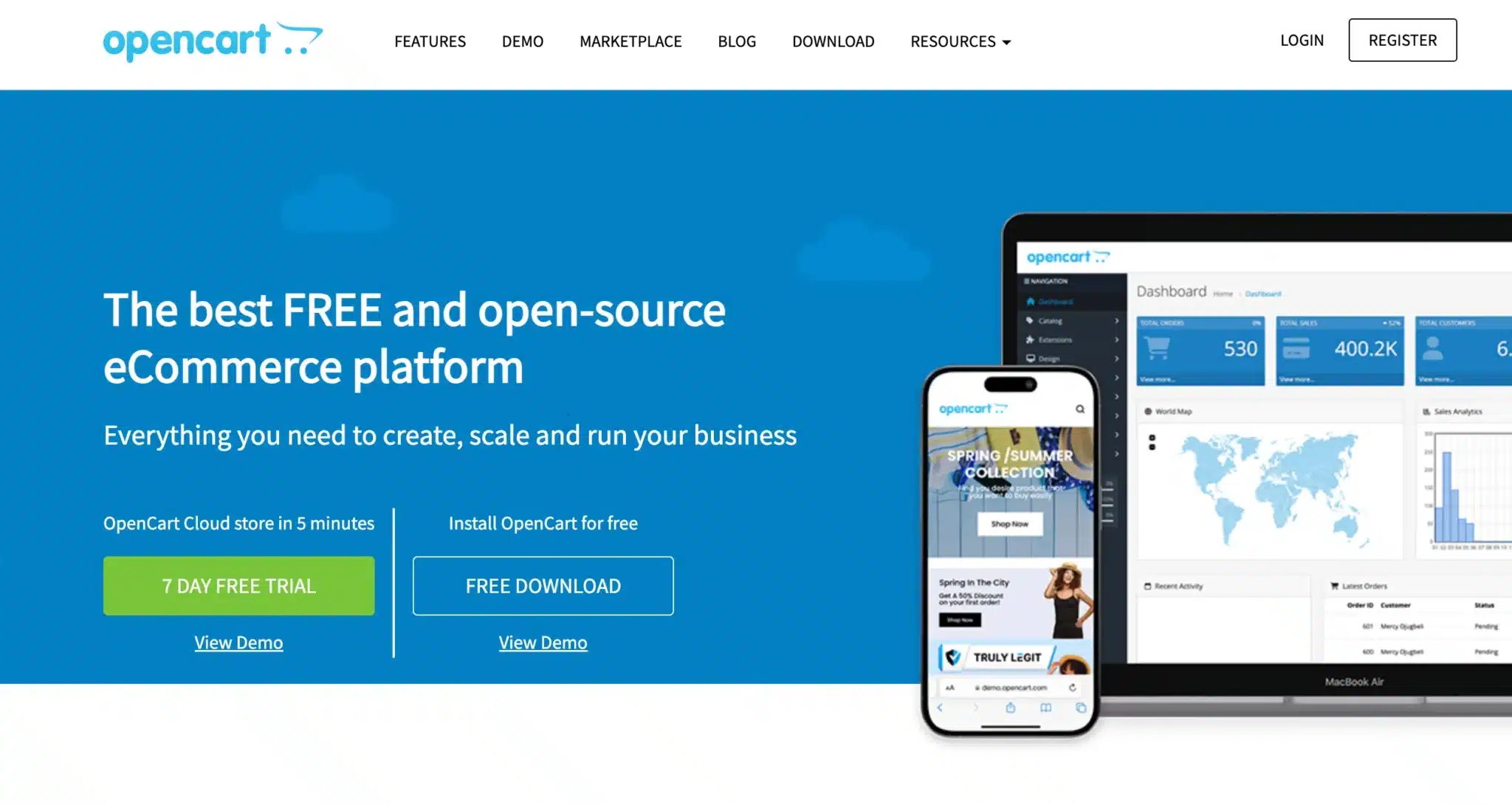
BigCommerce – Best for Scaling Fast & Selling Everywhere
If you’re planning to sell across Amazon, eBay, and social media, BigCommerce is built for that. We’ve seen retailers outgrow Shopify and move here to avoid extra app costs, thanks to its strong built-in features
Where it wins:
No transaction fees, great SEO, multi-channel selling.
Where it struggles
Steeper learning curve, higher pricing for advanced features.
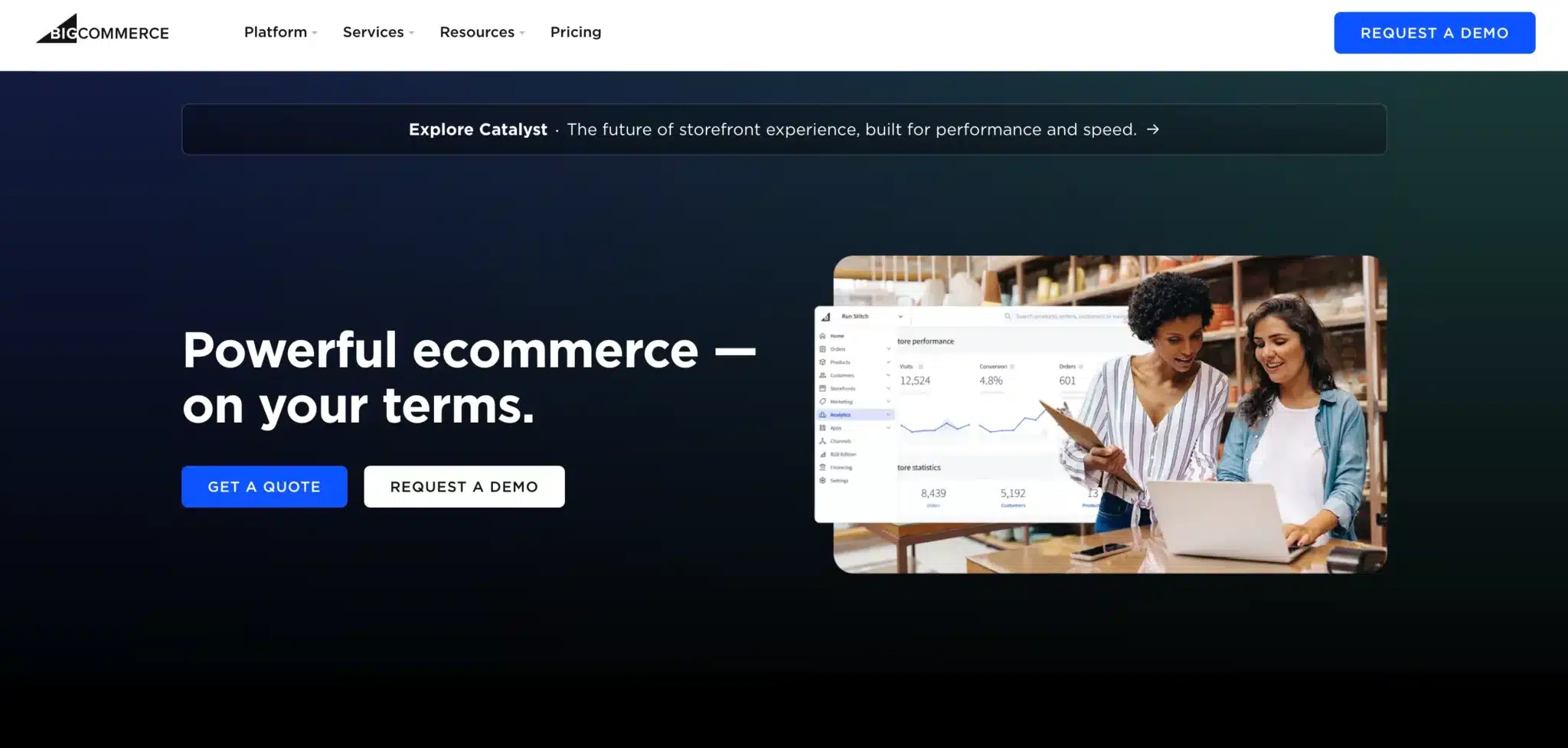
Adobe Commerce (Magento) – Best for Enterprise-Level eCommerce
If you need a store that can handle complex pricing, high traffic, and deep custom integrations, Adobe Commerce (formerly Magento) is king. We’ve worked with businesses that need serious power, and this delivers—but only if you have the budget and developers to manage it.
Where it wins:
Highly customisable, enterprise-grade scalability, top-tier security.
Where it struggles
Expensive to maintain, requires developer expertise.
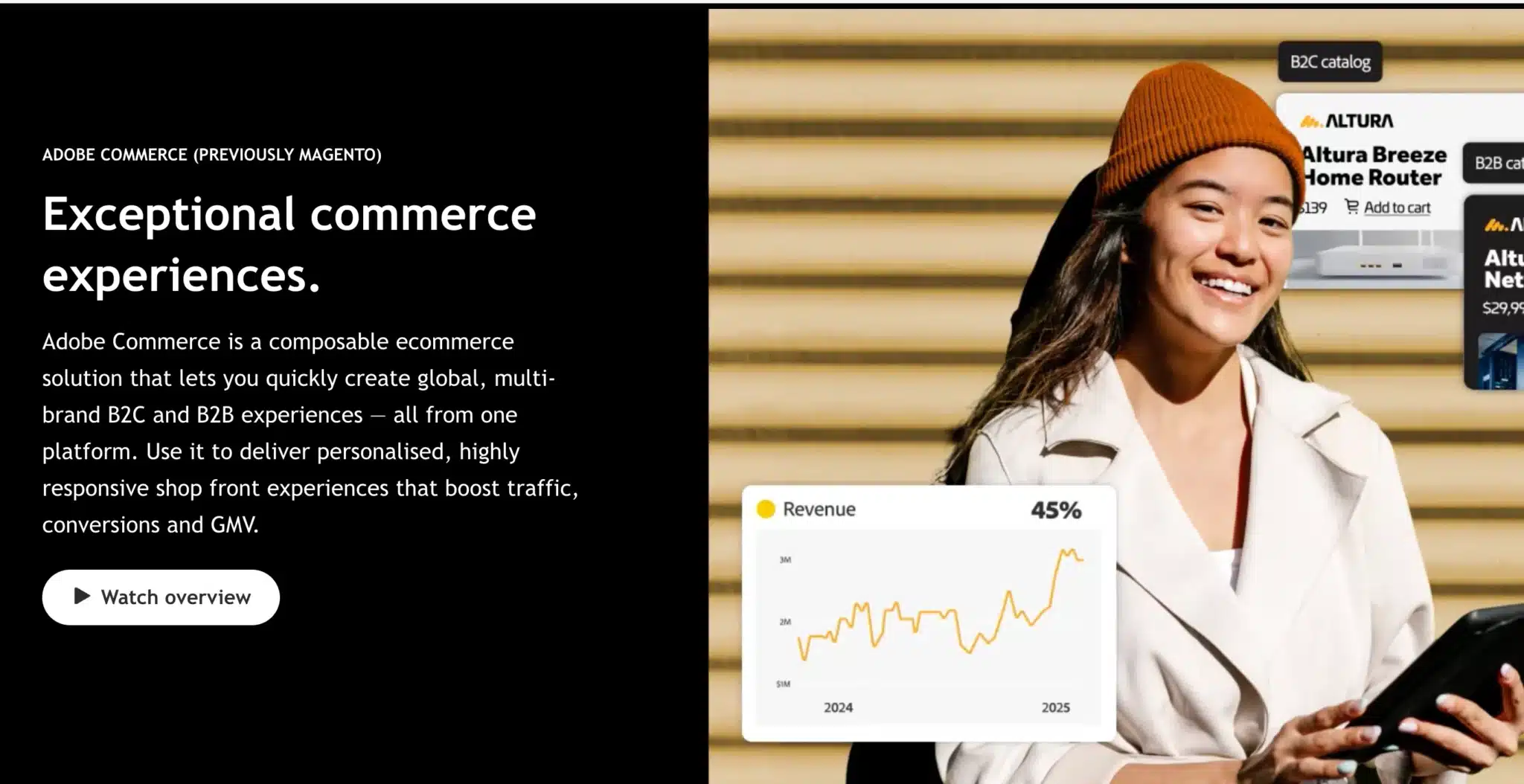
Drupal- Best for long-term flexibility and scalability
Drupal excels in security, customisation, and handling complex content structures. It’s an open-source platform with a strong emphasis on custom tooling for enterprise level clients. It even has a robust headless cms offering, branded as Drupal Decoupled.
Where it wins:
User experience, versatility, built-in security features.
Where it struggles
Requires developer expertise, long implementation times.
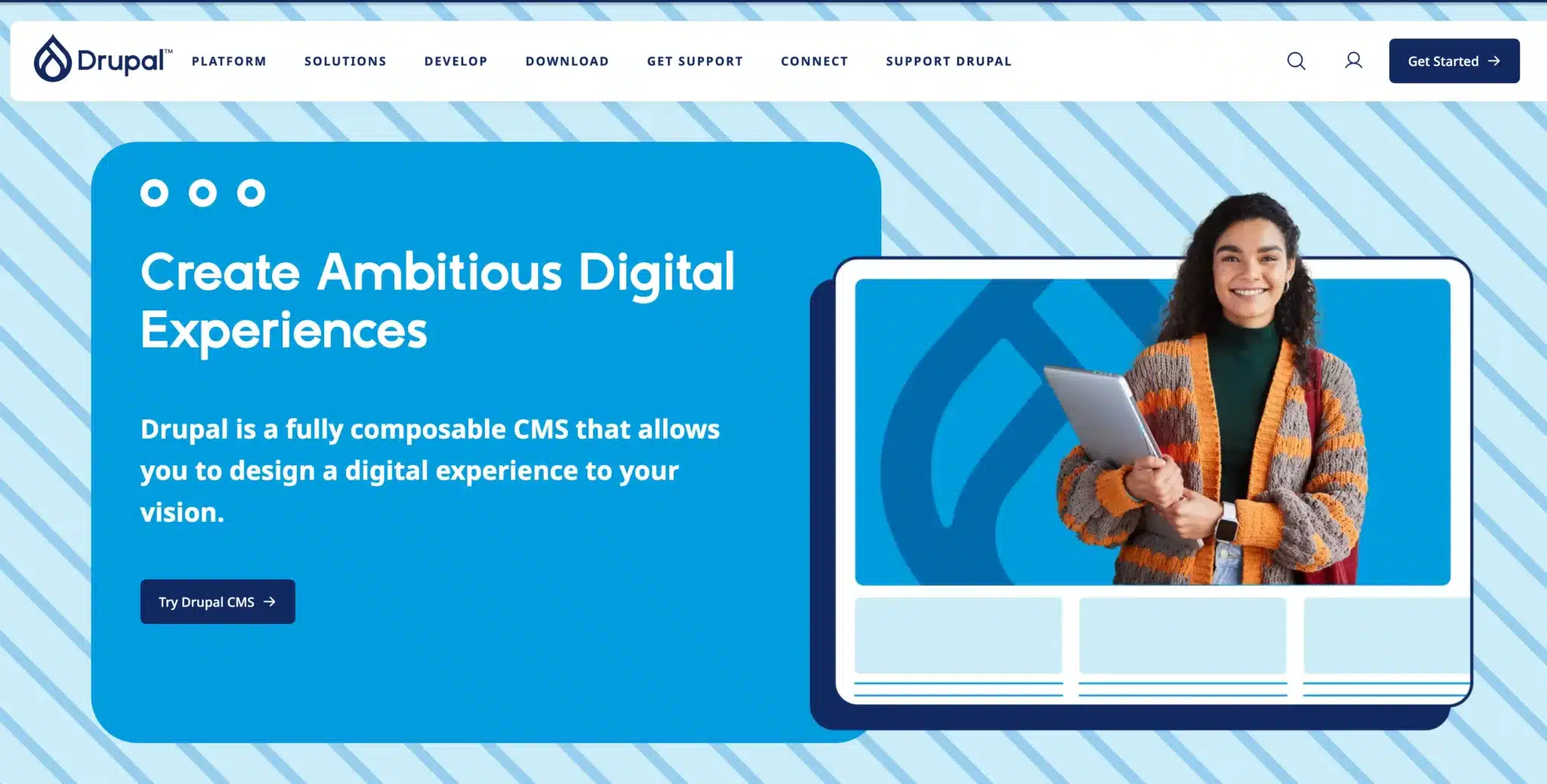
Learn more about Drupal
Joomla- The FREE option
Joomla is a completely free and open-source content management system. It’s designed primarily for content publication and is supported by a volunteer community. But, if you’re looking for a zero-cost option, Joomla does have eCommerce capabilities.
Where it wins:
It's completely free; no strings attached.
Where it struggles
Security, performance, steep learning curve, no customer support.
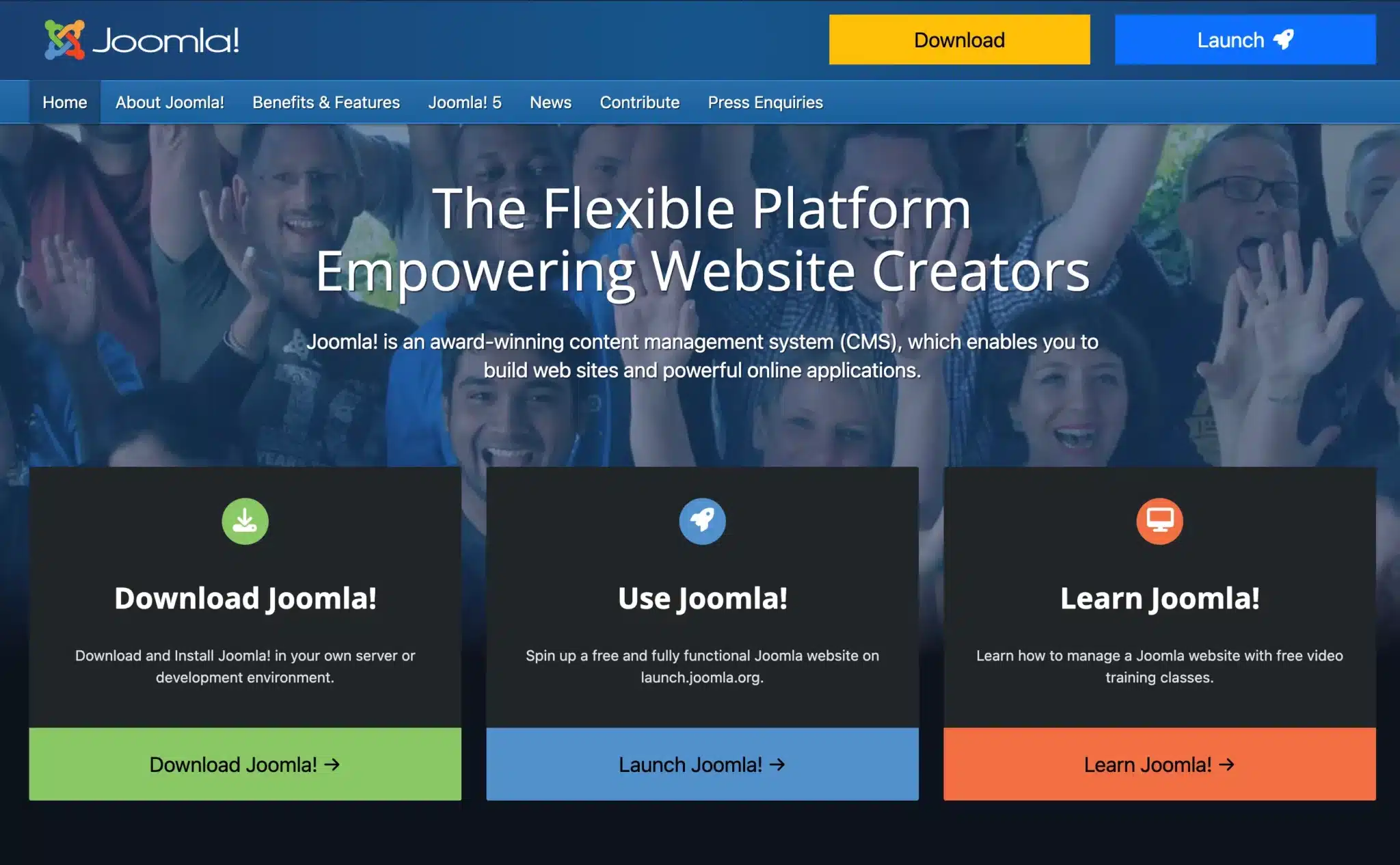
Key Considerations for Choosing an eCommerce CMS in Australia
The right CMS keeps your eCommerce website running smoothly, meets compliance requirements, and delivers a seamless shopping experience. Here’s what to look for, including some do’s and don’ts to guide your selection:
Local Hosting & Compliance
Australia has strict data privacy laws (think Privacy Act and Consumer Data Rights). Hosting your store locally isn’t just about faster load times—it is often about legal compliance and keeping customer data secure.
Payment Gateways That Australians Actually Use
A smooth checkout process makes or breaks a sale. Your CMS should support Afterpay, Stripe, PayPal, and other payment methods Australians trust. The easier you make payments, the fewer abandoned carts.
SEO & Performance Built for Google Australia
If your site isn’t fast and mobile-friendly, it’s getting buried in search results. Choose a CMS with structured URLs, metadata control, and image optimisation to rank higher and attract local buyers.
Mobile-First Shopping Experience
Most Australians shop on their phones, so your CMS needs fast load speeds, responsive design, and seamless navigation. If the experience is clunky, customers will bounce.
Simplicity Matters
Not every business has a developer on hand. Look for a CMS with an intuitive dashboard, drag-and-drop builder, and easy product management—so you can focus on selling, not troubleshooting.
UX That Converts
A great user experience isn’t just about looks—it’s about function. Frictionless checkout, clean navigation, and fast-loading pages keep customers engaged and increase conversions.
Plug-and-Play Integrations
Your CMS should connect seamlessly with CRMs, analytics, email marketing, and inventory tools. If it doesn’t integrate smoothly, scaling your business will be a nightmare.
Community & Support
When issues pop up, you need solutions fast. A strong community, extensive tutorials, and responsive support make all the difference when troubleshooting or customising your store.
Still Not Sure? Let’s Make It Simple
We just threw a lot of info at you—different platforms, key features, what to look for. If your head’s spinning a little, you’re not alone. Plenty of businesses hit this point, unsure of which way to go. But don’t stress—we’ve got you. Here’s the short version:
Small business or startup?
Go with Shopify. It’s easy, quick to set up, and takes the tech headaches off your plate. Plenty of Aussie businesses start here because they can focus on selling, not troubleshooting.
Using WordPress?
WooCommerce is your best bet. It’s flexible, cost-effective, and gives you full control. If you like customising every little detail, this one’s for you.
Running a big, high-traffic store?
Adobe Commerce (Magento) is built for scale. It’s powerful, endlessly customisable, and ready for complex business needs. You’ll need a developer, but if you’ve got the resources, it’s worth it.
At the end of the day, the best CMS is the one that works for you—not just on paper, but in real-world business.
When to Turn to a Professional for Your eCommerce CMS
Managing an eCommerce CMS can become overwhelming, especially as your business grows. Here are key signs that it might be time to seek expert support:
- Your website isn’t converting visitors into customers – If you’re experiencing high bounce rates or abandoned carts, a professional can optimise your SaaS eCommerce platform for better user experience and conversions.
- You’re struggling with integrations – Connecting your CMS with essential tools like Adobe Experience Manager, payment gateways, and shipping providers shouldn’t be a hassle. An expert ensures smooth integration across different platforms.
- SEO & content marketing aren’t driving results – If your site isn’t ranking on Google or attracting the right audience, professional help can improve your content management tools and SEO strategy to boost visibility.
- Scaling your business feels impossible – Whether you need to upgrade to Advanced Shopify, expand into an online marketplace, or switch to a more flexible open source eCommerce platform, expert guidance ensures a seamless transition.
- Technical issues keep slowing you down – Frequent website errors, slow load times, and security concerns can impact sales. Professionals ensure your website development is stable, secure, and high-performing.

What You Can Achieve with Professional Support
Partnering with experts doesn’t just solve problems—it helps you unlock growth opportunities. With the right support, you can:
- Increase sales and customer retention – Optimise your SaaS CMS for a seamless shopping experience that keeps customers coming back.
- Expand your reach – Sell across multiple channels, from your website to major online marketplaces, with an efficiently managed open source CMS.
- Save time and resources – Let professionals handle complex website development, integrations, and performance tuning, so you can focus on business strategy.
- Strengthen your brand presence – Improve SEO, content marketing, and user experience to stand out in a crowded eCommerce industry.
- Future-proof your business – Ensure your CMS is scalable, secure, and adaptable to new technologies, trends, and customer expectations.

With the right support, you’re not just managing an eCommerce site—you’re building a powerful, competitive business.
The Right CMS to Drive Sales & Growth
Your eCommerce CMS drives how you sell, scale, and compete in Australia’s fast-moving digital market. With compliance, local integrations, and customer experience all in play, making the right choice takes more than a feature checklist.
We’ve broken down the options, the must-haves, and the trends shaping online retail. Now, it’s about finding the platform that fits your business goals.
If you’re looking for ecommerce website design in Sydney, Spark can help you make the right call.
Frequently Asked Questions
It depends on what you need. Shopify is the go-to for those who want a hassle-free setup with built-in tools and reliable support—perfect if you don’t want to worry about hosting or security. WooCommerce, on the other hand, gives you more control and flexibility, making it ideal for businesses that want deep customisation and already use WordPress. Both are great, but the right choice comes down to whether you prefer simplicity or customisation.
A good CMS does more than just let you edit product pages—it should offer SEO features that support how your store ranks on Google. SEO-friendly platforms let you optimise metadata, generate clean URLs, and improve site speed. They also help with structured data, making it easier for search engines to understand your site. Plus, since Google prioritises mobile-first indexing, choosing a CMS with responsive design and fast loading times is key to staying competitive in Australian search results.
If you’re thinking big, you need a CMS that grows with you. BigCommerce is a strong choice, offering built-in multi-channel selling across Amazon, eBay, and social media, plus no transaction fees. Magento (Adobe Commerce) is another powerhouse, giving large enterprises complete control over customisation, integrations, and high-traffic handling—though it requires developer expertise. Both let you scale without worrying about outgrowing your platform.
A smooth checkout experience is crucial for conversions. In Australia, customers expect familiar and trusted payment methods like Afterpay, PayPal, and Stripe. A modern ecommerce site should support multiple gateways that work with local banks and comply with Australian financial regulations. Bonus points if it offers one-click payments and digital wallets like Apple Pay and Google Pay to reduce cart abandonment.
Hosting matters more than most people realise. If your website is hosted overseas, you might face slower loading times, which can frustrate customers and hurt SEO. Local hosting ensures faster performance, better uptime, and compliance with Australian data privacy laws. Some platforms offer built-in hosting (like Shopify and BigCommerce), while others (like WooCommerce and Magento) let you choose your provider—so pick one that prioritises speed, security, and local support.





